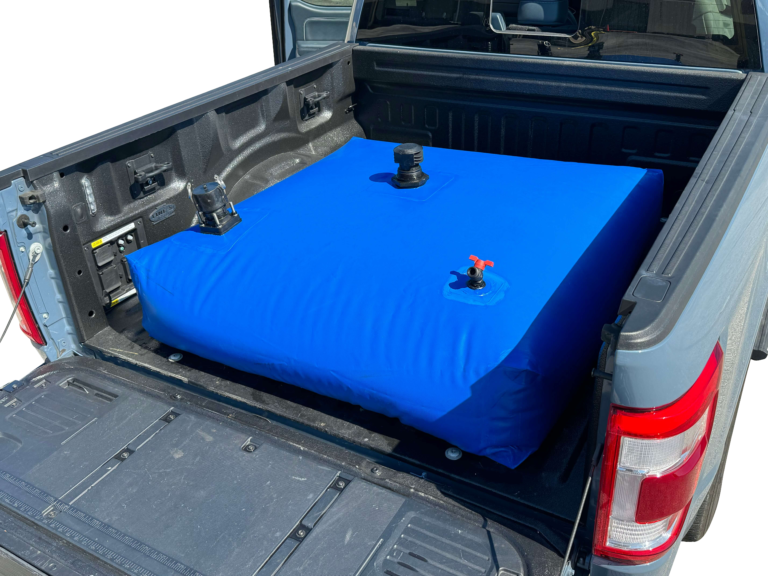Rainwater Bladder Tank
Custom rainwater collection bladder tanks, designed to reduce costs and conserve water.
Product Description
Pictured is a large, 100,000 gallon Rainwater Bladder Tank built to collect rainwater at a chicken farm in Alabama. The plan was to reduce the use of municipal water and reduce costs through the use of rainwater collection.
According to the study by Auburn University’s National Poultry Technology Center (NPTC), “If they are using water from a municipal water system, a four-house farm has a water bill that could be as high as $22 thousand annually. That is a direct, out-of-pocket expense to growers.”
Fortunately, the plan worked, and the farmer was able to reduce water costs. To find out more about it, check out the article, “Rainwater Harvesting Could Revolutionize Poultry Industry”.
The water bladder was manufactured by Ready Containment with 4 eight-inch NPT flanges to allow for the flow into the bladder. We offer custom, flexible solutions to water, vapor, and fuel storage. Call Ready Containment at 941-739-9486 or email us.
Additionally, Ready Containment also manufactures large fuel and water bladders for the military and a variety of spill containment berms.
Product Features
- Rainwater collection or harvesting
- Hydroponics is the process of growing plants in sand, gravel, or liquid, with added nutrients but without soil.
- Surface irrigation water is distributed over and across the land by gravity, with no mechanical pump involved.
- Localized irrigation water is distributed under low pressure, through a piped network, and applied to each plant.
- Drip irrigation is a type of localized irrigation in which drops of water are delivered at or near the root of plants. In this type of irrigation, evaporation and runoff are minimized.
- Sprinkler irrigation distributes water by overhead high-pressure sprinklers or guns from a central location in the field or from sprinklers on moving platforms.
- Center pivot irrigation distributes water by a system of sprinklers that move on wheeled towers in a circular pattern. This system is common in flat areas of the United States.
- Lateral move irrigation distributes water through a series of pipes, each with a wheel and a set of sprinklers, which are rotated either by hand or with a purpose-built mechanism. The sprinklers move a certain distance across the field and then need to have the water hose reconnected for the next distance. This system tends to be less expensive but requires more labour than others.
- Sub-irrigation distributes water across the land by raising the water table through a system of pumping stations, canals, gates, and ditches. This type of irrigation is most effective in areas with high water tables.
- Manual irrigation distributes water across land through manual labour and watering cans. This system is very labor-intensive.






